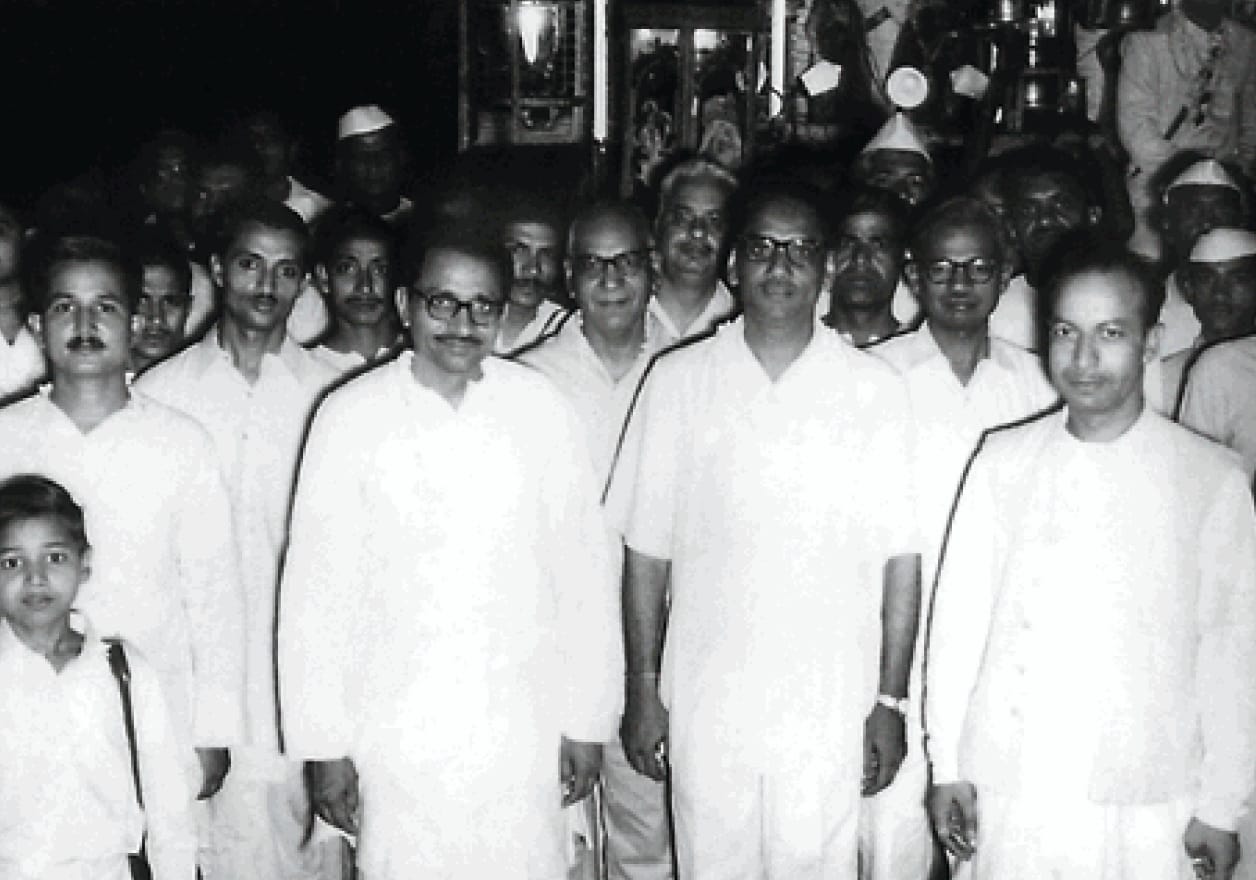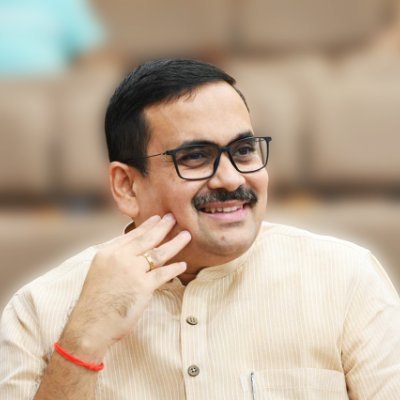वयं राष्ट्रे जागृयाम & “Eternal Worship of Unity”
Ever since Prime Minister Narendra Modi concluded his address with these following words “वयं राष्ट्रे जागृयाम” they have kept echoing and re-echoing in my mind. I am not an exception; it has been and continues to be the case with countless Indians who heard him that morning, (14 April) when the first phase of the Corona Lockdown was coming to an end. Words such as these have a mantric value and effect and they keep rippling and reverberating in the mind. Our ancient Seers had come up with these utterances and formulations after deep reflection and penance. They imparted these words with a certain power thus ensuring that they remain dynamic even after the passage of millennia. These words from the Yajur Veda, read thus: “वयं राष्ट्रे जागृयाम पुरोहिताः” – we are the sentinels, the propitiators of the cause of the Rashtra and “we live, we endure, we persist, we persevere for safeguarding and perpetuating the Rashtra’s glory, her greatness, her national character, her values, her radiating feeling of oneness, her prosperity and her perennial existence and onward march, we have no other distractions, no other desire, no other meaning of our self. These were the types of exegetes who roamed the length and breadth of civilisational India in the past, combining in their collective presence that strength and power which kept our civilisational and cultural spirit alive and dynamic. It was they who were also adepts at politics and governance. One can only make such a conjecture, piercing through the mist of the past and through the veil of falsification that has been weaved over the decades, especially in a free India. That morning, through this exhortation of his, PM Modi was essentially asking us to reflect on that dimension of ours. He was essentially, once again, appealing, touching the chord of that deeper unity which, in the last few weeks has been visible rising up in waves across the country. His conclusion was a tribute to India’s civilisational essence and unity.
Those who have never seen, experienced or internalised India as a Rashtra could not obviously follow this dictum. Having spent their public careers demonising such evocations, they could not understand what it really meant. It is this ignorance and deliberate habit of distortion thus, which sees them, even in these challenging times persist with trying to find faultlines, generate false stories and more crucially, trying to keep politicising internationally India’s valiant battle against Corona – which is undeniably based on equity, uniformity and justice. Over the last few days we have seen therefore how they have persisted in trying to whip up the narrative of “Islamophobia”, “discrimination”, “Kashmir neglected and suppressed” and more. These elements embody a spirit which is the exact antithesis of this utterance of the Yajur Veda.
Repeating PM Modi’s words, one was also reminded of a particularly inspiring writing of Deendayal Upadhayayji, on India’s unity. The theme of Deendayalji’s politics and of the one to which we are wedded today, was and continues to be “the homage to Indian unity.” It was that homage which had led him to persevere to create a new political eco-system and superstructure. It was that relentless pursuit of preserving and strengthening India’s unity that must have led him to write the play “Chandragupta”, through whom Acharya Vishnugupta – Chanakya, weaved one mighty Bharat – into a single, compact, entity – Rashtra and further crystallised the sense of oneness. Deendayalji himself eloquently described it, “As soon as Alexander of Macedonia knocked on India’s north-western gates, the great Acharya Chanakya declared, “Na tvevaryasya dasabhava”, people of Aryavarta cannot become slaves, “and the mighty Chandragupta Maurya, not only defeated and expelled the Greek invaders, but also ended the separate existence of any squabbling republics and laid the foundation of a firm, mighty pan-Indian empire.”
Deendayalji spoke of the “Eternal Worship of Unity”. We have always, he wrote “worshipped the unity and integrity of India. The history of our nation is virtually the history of the adherence to this idea. The declaration, “Prithiviya samudraparyantaya ek rashtra (This land is one till the oceans) by rishis, in the background of which lies the shloka, “Nilsindhu jal, dhauti charanatal” (The blue ocean washes its feet) actually is the vision of the unity of India.
Inspiringly and lyrically Deendayalji describes the expanse and spread of India’s unity as described in the epics, in the sacred texts and poems. Speaking of the Mahabharata, he pointed how, the epic “could not become the centre of our consciousness till it covered the entire expanse of the nation from north to south and west to east.” In line after line, in this inspiring piece, Deendalayaji evoked the consciousness of unity as experienced and crystallised in this vast continental expanse of India. For all sects and religious beliefs that “have originated in India”, he observed, the unity of India was their ideal. “Their places of pilgrimage are spread across the length and breadth of the country” and those who visit “these places of pilgrimage automatically tour the entire country.” The examples Deendayalji cited, are the ones that still move us and these were established, were founded, were imagined by those very sentinels for whom eternal India was a vision that had to be manifested in physical and cultural terms. They therefore, first, envisaged and delineated a spiritual unity. “Badrinath, nestled in the snow clad-mountains of the Himalayas in the north is a place of worship that people of every state and community aspire to visit at least once in their lifetime”, Deendayalji pointed out, “Rameshwaram, where the ocean and other seas wash the feet of Mother India is visited by thousands of pilgrims from all over India to offer the water of the Ganga brought from the holy Gangotri to worship Shiva. This is the uninterrupted source of unity of this nation from north to the south.” This source was laid by those whose mantra or motto was वयं राष्ट्रे जागृयाम.
From scriptures, to rituals, to patterns of policies and administration of land, from the axes of wheels to medicine, Deendayalji argued, with examples, on how this unity was evident and palpable. In times of a pandemic, it will be interesting to read what he wrote of the Ayurveda symbolising this unity, “The Ayurveda, deals with people of India”, he wrote, “their ailments and cure and the herbs and medicines that are found in all parts of the country…There is no mention of any disease or medicinal herb outside the country, nor has any herb found in any part of our country been omitted.” Ayurveda prescribed medicines according to the germs and people of a region…” Interestingly thus, even our principle medicinal text was also based on that unity expressed it through its prescriptions!
It was this unity and solidarity, thus, that “emerged in times of happiness and grief, victory and defeat, prosperity and despondency [and] forged our nation in an unbreakable bond”, Deendayalji tells us, and the “unity that was realised in all walks of life was not limited to only the material plane but also permeated our spiritual consciousness. The unity of our country and culture is infused with the consciousness that dwells in our inner selves. This inner self cannot be broken or destroyed…”
In a sense, that morning PM Modi was speaking, as he had done in the past, to our inner selves, that collective consciousness had been visible in the last few weeks of battling with the pandemic, despite ridicule and scorn being poured on it by a de-rooted section, it was visible and emerged from our collective inner selves. वयं राष्ट्रे जागृयाम thus was a tribute, an invocation and a salutation to that emergence.
Suggested Reading:
Eternal Worship of Unity, (CWDU:2)
(The writer is the Director, Dr Syama Prasad Mookerjee Research Foundation)
(The views expressed are the author's own and do not necessarily reflect the position of the organisation)


